‘Mulan’ Meets ‘Game of Thrones’ in Netflix’s Animated ‘Blue Eye Samurai’
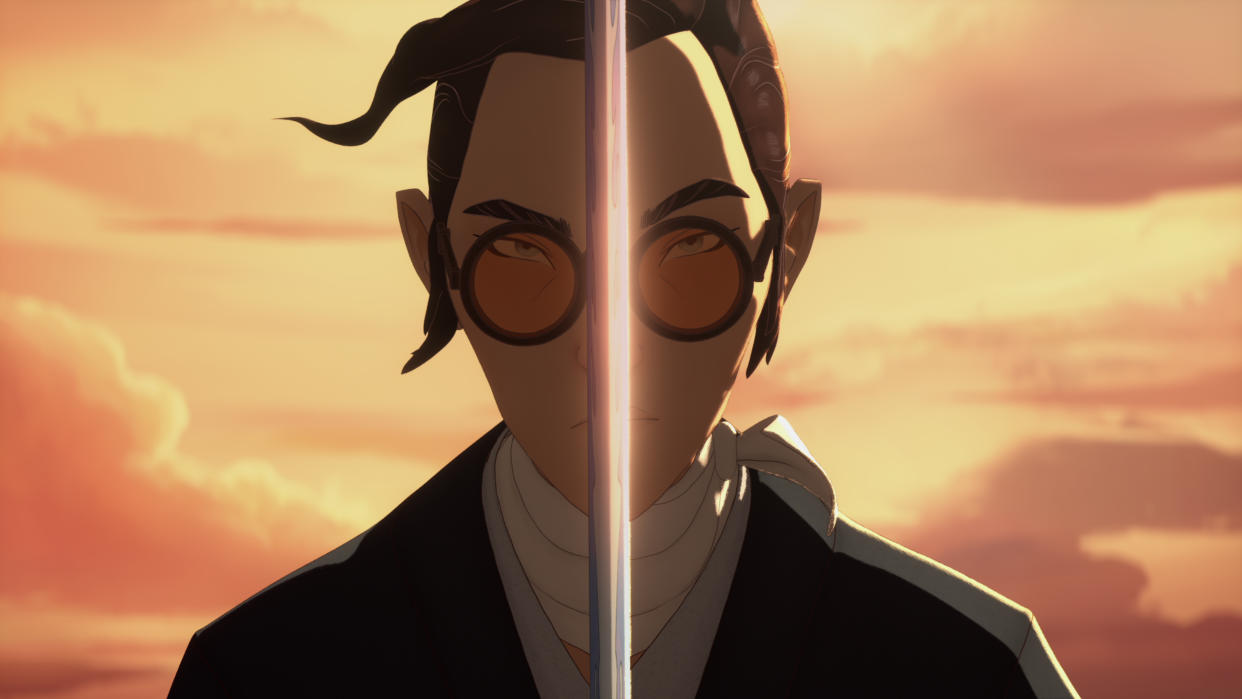
- Oops!Something went wrong.Please try again later.
- Oops!Something went wrong.Please try again later.
The line between animation and live action is brilliantly blurred in “Blue Eye Samurai,” the 2D/3D hybrid animated action series set during Edo-period Japan. It’s “Mulan” meets “Game of Thrones,” in which Mizu (voiced by Maya Erskine) — a mixed-race, lone-wolf warrior — lives in disguise seeking revenge on the four white men who made her a “creature of shame” (especially the power hungry Irish baddie, Fowler, voiced by Kenneth Branagh).
“Blue Eye Samurai” represents a bold, cinematic leap in TV adult animation that’s driven by the period-authentic scope and spectacle. All eight episodes are treated as a different genre, and the graphic violence and sex are enhanced by the stylistic poetry of the animated form (the characters are inspired by Bunraku puppets and the visual style by ukiyo-e woodblock prints). Crucially, though, its exploration of race and gender through the dark lens of anti-hero Mizu is refreshing and relatable.
More from IndieWire
The series was created by the married team of Amber Noizumi (a former journalist) and Michael Green (Branagh’s Hercule Poirot franchise and “American Gods”). The chief partner in translating their script into animation was supervising director/producer Jane Wu (“Men in Black” animated series, and story artist on “Spider-Man: Into the Spider-Verse” and “Game of Thrones”), whose vision was making animation with a live-action attitude. This was achieved with the collaboration of production designer Toby Wilson, costume designer Suttirat Larlarb, and the animation team at Blue Spirit (based in France and Canada).
In fact, the idea came to Noizumi while observing their blue-eyed daughter and imagining a female-driven, mixed-race story about a “blue eye samurai.” It took 10 years until they finally realized that adult animation was the best approach. “We went into it as live-action people naive enough to think that the only difference between an animated show that people are used to and one that played like a live-action show was just intention, and it turns out it’s a lot more than that. You have to bring that intention into the artistry of it,” Noizumi told IndieWire.
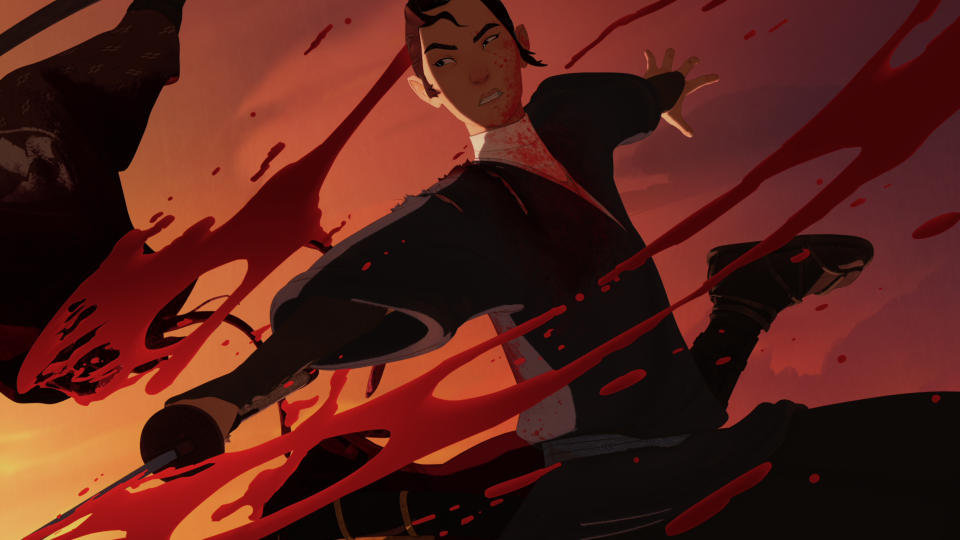
“We wanted everything in the show to be as beautiful as possible with every tool available in animation,” she continued. “Whether it was people walking through a snowstorm, a sunset, a slit throat, or a couple having sex for the first time.”
Green added that they wanted to make sure they had an answer for the animated artists coming from the children’s sphere and unused to drawing such adult characters and situations. “And we wanted people to treat it as if they were watching ‘Game of Thrones,'” he told IndieWire, “and that they could forget that it’s animated and have as high an attachment to these characters.”
The development of Mizu was razor-focused, stemming from the fact that in the Edo period starting in 17th-century Japan, it would’ve been illegal to be white. “Nobody would’ve wanted to look white like that,” Noizumi said. “But we knew exactly what she wanted, and that’s revenge. It’s satisfaction.”
We’re first introduced to Mizu in Episode 1 (“Hammerscale”) when she walks into a steamy soba shop wearing tinted glasses and a low-hanging jingasa hat and severs the hand of a despicable flesh trader (Randall Park) with her extraordinary blade made from a meteorite. The blood gushes like paint and decorates a banner. It’s just the first of the flamboyant geysers and severed limbs to come with every swing of her blade.
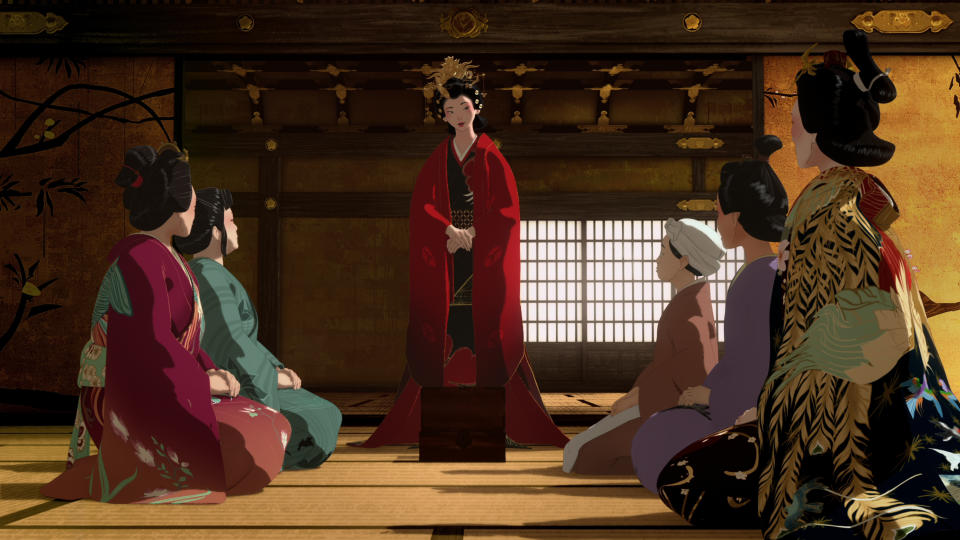
“When I sat down, I said I wanted to do what ‘Game of Thrones’ did for TV with this — the kind of epic, intimate, political, feature quality filmmaking,” Wu told IndieWire. “I didn’t want to skimp on not showing those wide shots and not showing more than two locations, and that’s what makes a show epic aside from the filmmaking aspect of seeing different parts of Japan, seeing different architecture, seeing different environments. I wanted to achieve a simple introduction of adult drama into animation that we do in the East all the time but you just have not seen here in the West.”
Wu, who directed “Hammerscale” and the final episode, “The Great Fire of 1657,” strove to be culturally authentic and maintained that the scripts were so well-written that they just had to render them. For that, Blue Spirit used a reliable 2 1/2 D projection mapping technique that allowed them to retain a two-dimensional art house quality.
“The live-action look to it comes from camera and also making sure that every single shot had a lensing assignment to it,” Wu added. “What you don’t see in TV animation is an understanding of lensing, so I asked all my directors that come from animation to study up on lensing. And we even chose the same lensing package from ‘Game of Thrones,’ having worked there, and we wanted to only use natural lighting, with the event of some bounce light to just kind of light the space.”
All of the sets were built in 3D, and once they picked their shot, they did live action-style previs and handed it over to Blue Spirit, where they painted and projection mapped it to the actual 3D element. “You could move the camera only about 30 degrees, but, in keeping the characters to be able to stand up to that, I wanted brush strokes in every single shot that you see so that it keeps the idea of the artist’s hand present at all times,” Wu continued.
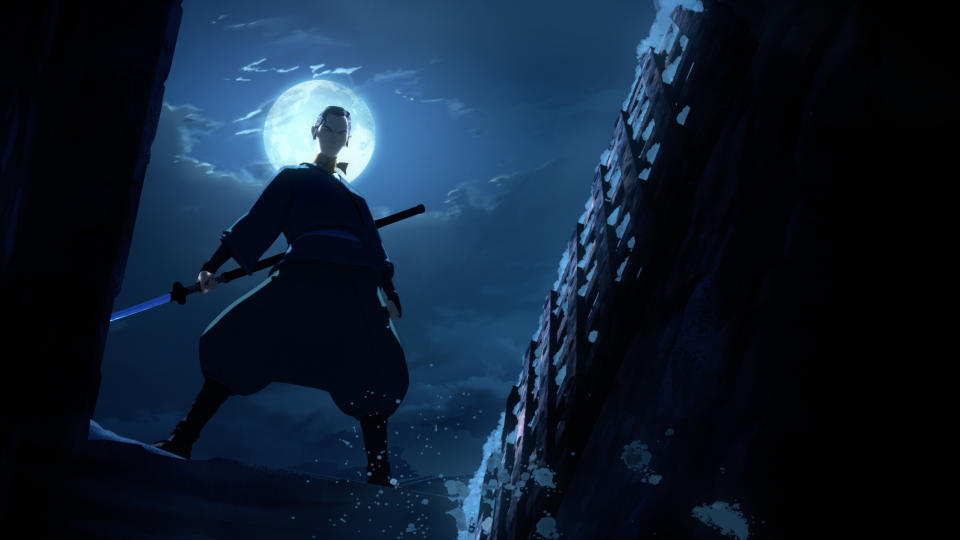
On her journey of revenge, Mizu battles students at a Shindo Dojo (see the exclusive clip below), a samurai army inside a peculiar brothel, a formidable force at Fowler’s sadistic Island Castle, and a blazing confrontation with Fowler in Edo. Yet Episode 5 (“The Tale of the Ronin and the Bride”) offers the most complex story, intercutting Mizu’s secret history of love and betrayal with the need to summon her inner demon to defeat the army of a bruiser mobster. All of this is wrapped around the metaphor of a Bunraku puppet show.
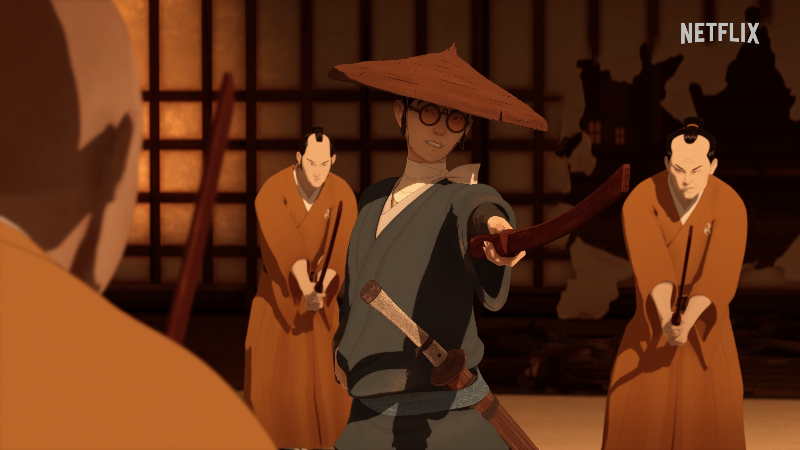
In “Blue Eye Samurai,” martial arts is like a dance, gore is like painting, and nudity is revered for its natural beauty. But there’s also gender weaponization in the contrast between Mizu and a naive princess named Akemi (Brenda Song), who crosses her path.
“Little by little, Akemi understands that her power is only her gender, which is interesting because it’s completely the opposite of Mizu,” Wu said. “She thinks her gender has no power at all, so she hides it.”
Mizu’s story of revenge will carry over into Season 2 if Netflix renews the series. Noizumi and Green have a roadmap laid out for four potential seasons. “We know where our ending is for this particular story,” Noizumi said. “Mizu believes that once she gets this revenge, she will have peace. And we know that that’s not what she needs, we know that it’s internalized racism, sexism, and her loneliness that she has.”
Best of IndieWire
Sign up for Indiewire's Newsletter. For the latest news, follow us on Facebook, Twitter, and Instagram.

